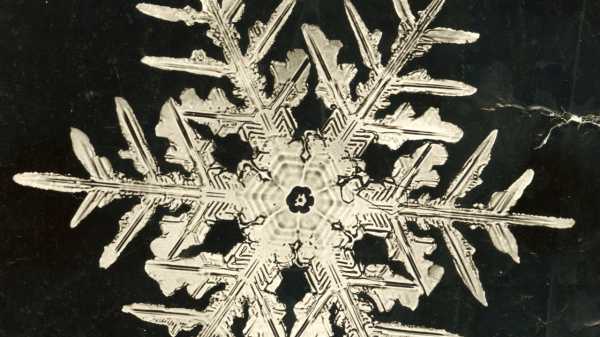
Save this storySave this storySave this storySave this story
Snowflakes provide many of us with our earliest impressions of what it means to be unique. Even within a group—the flakes so numerous as to be seemingly uncountable—no two, we were told, are exactly alike. I remember this idea blowing my mind, though in time it became a part of my mental furniture, a tidbit so foundational that it no longer wowed.
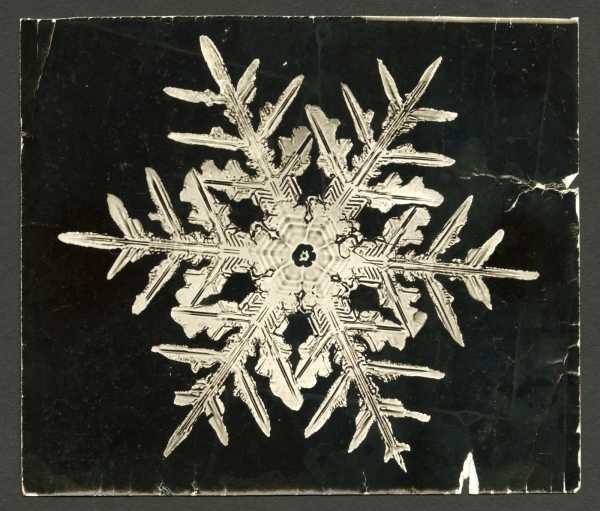
Stellar Snowflake No. 332.
For Wilson Bentley, the late-nineteenth- and early-twentieth-century microphotographic innovator and bona-fide snowflake obsessive, contemplating the dazzling panoply of kaleidoscopic snow-crystal formations was a pastime that never lost its lustre. In fact, it is through Bentley’s encyclopedic collection of more than five thousand snowflake photographs, a portion of which are now housed in the Smithsonian Institution, that we got the notion of snowflakes’ singularity in the first place.
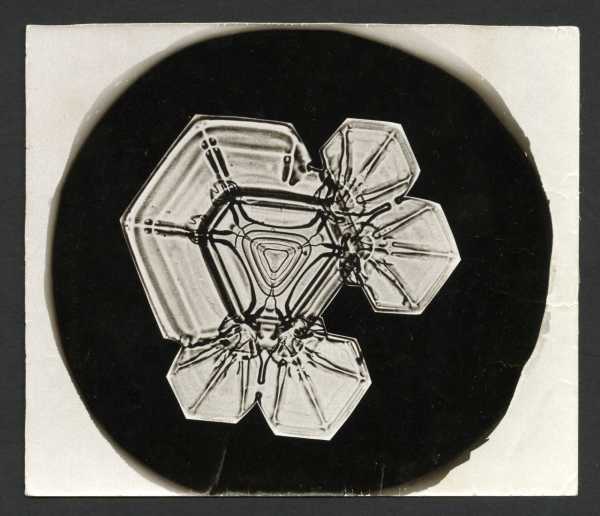
Tabular Snowflake No. 1224.
Bentley was born in 1865 and raised on a farm in Jericho, Vermont. His father and brother spent their days tending to the property. Bentley was expected to pitch in, too, but he was more interested in studying the land than in working it. He became enthralled with a microscope given to him by his mother, a former schoolteacher, using it to study “drops of water, tiny fragments of stone, a feather dropped from a bird’s wing, a delicately veined petal from some flower,” he later wrote. “But always, from the very beginning it was the snowflakes that fascinated me most.” Under his microscope, Bentley discovered that each snowflake had its own careful and fleeting geometry. “Every crystal was a masterpiece of design and no one design was ever repeated,” he wrote. “When a snowflake melted, that design was forever lost.” He first tried his hand at drawing the snowflakes, but found that they were too elaborate for him to reproduce with adequate fidelity. Eventually, he got the idea to capture them photographically instead, but he ran into a significant hurdle: the camera that he needed would cost a princely sum. After two years of waiting, he persuaded his parents to use part of an inheritance they’d received after the death of Bentley’s grandmother to gift him a view camera for his seventeenth birthday.
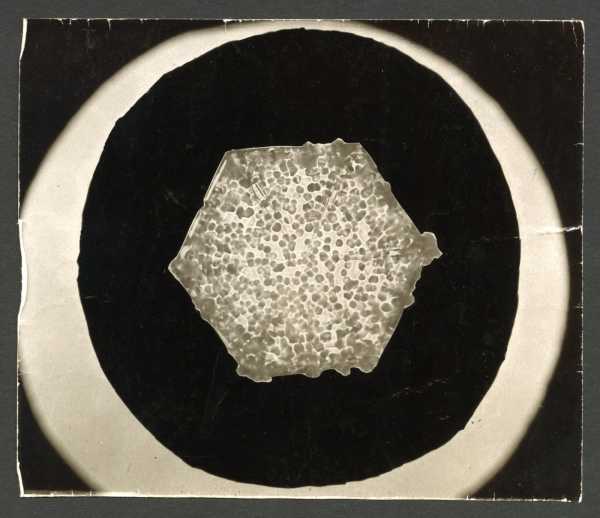
Granular Snowflake No. 807.
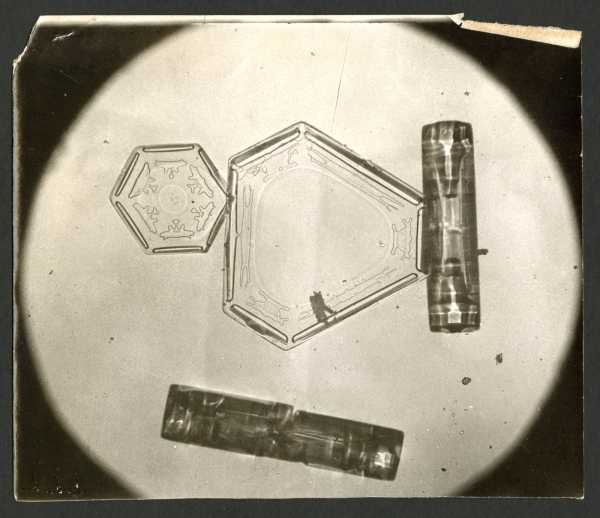
Lamellar/Columnar Snowflake No. 777.
When the standard camera lens could not focus as closely as Bentley needed, he devised an ingenious solution, jury-rigging his beloved microscope to the camera’s accordion-like bellows. His finished apparatus was so long that he could no longer reach the focussing knob of the microscope while looking through the camera, so he fashioned an auxiliary-focussing mechanism out of wood and string. His other tools, he later noted in a piece he wrote for the magazine Popular Mechanics, were humble: “a pair of thick mittens, microscope slides, a sharp pointed wood splint, a feather, and a turkey wing or similar duster.”
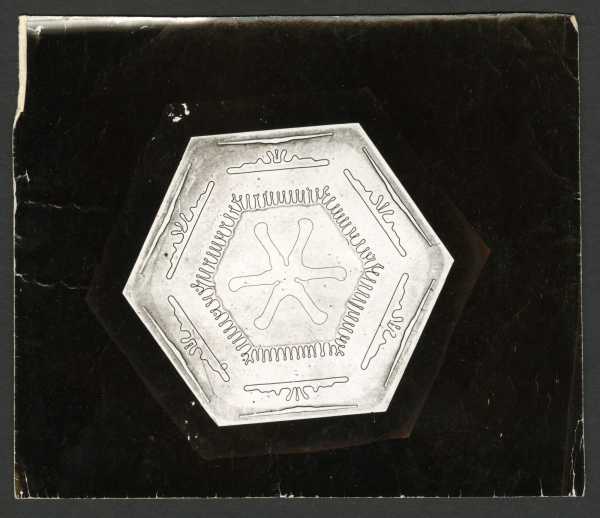
Lamellar Snowflake No. 801.
By the winter of 1885, after three years of experimentation, Bentley had finally perfected his technique. When a snowstorm blew through, he would head outside with a black slate to catch flakes as they fell and then examine them with a handheld magnifier. If their patterns weren’t sufficiently intricate, he would whisk the flakes away with the turkey wing, clearing the slate. Once he nabbed a choice specimen, he would retire to a shed where the camera was set up by a window. Using the pointed splint, he would transfer the captured crystal to a microscope slide and press it to the glass with his feather. Then it was a race against the clock to focus the camera and make the lengthy exposure—a task that could take as long as two minutes—before the snowflake melted. He later recalled the day he’d developed his first successful negative as “the greatest moment of my life.”
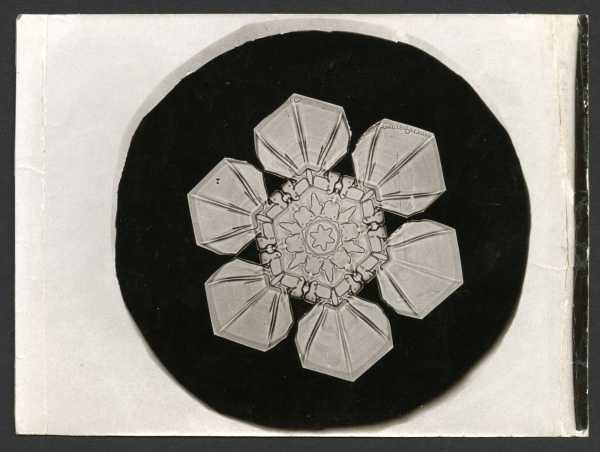
Stellar Snowflake No. 890.
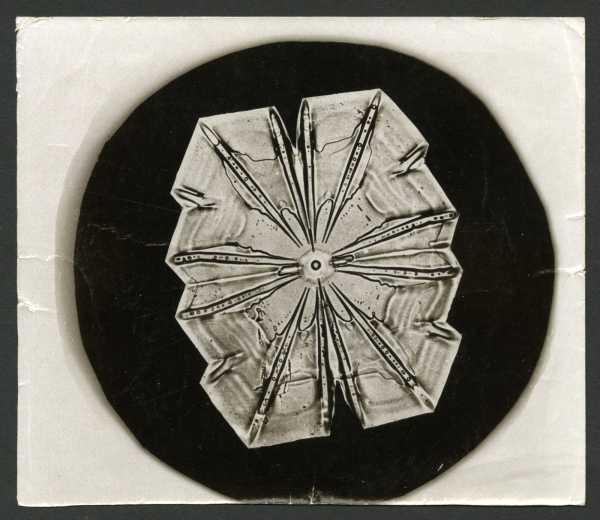
Tabular Snowflake No. 1209.
Bentley photographed avidly for around thirteen years, without attempting to publicize his pictures. His great-great-grandniece Sue Richardson, who works at a small museum in Jericho dedicated to his images, said in an interview that she suspects Bentley figured “he didn’t have anything to share that probably some professor at some big college somewhere in the world didn’t already know.” In 1898, he finally brought his pictures to the University of Vermont, where he met up with George Perkins, the dean of the school’s natural-science department. Perkins was duly impressed, and the next year the pair published a jointly authored paper, “A Study of Snow Crystals,” in Popular Science Monthly, which brought Bentley’s work to a wide audience. During the following decades, Bentley wrote articles, gave lectures, and sold prints to clients that included Tiffany & Co., which purchased a collection to serve as inspiration for its jewelry designs. In 1931, he published a book of his images with the help of the physicist and atmospheric researcher William Jackson Humphreys. In December of that same year, Bentley was returning from a trip to Burlington when he got caught in a snowstorm. The winter had been unusually warm, and, eager to take advantage of this opportunity to photograph, he chose to walk the six miles home to his family farm. He died of pneumonia less than three weeks later.
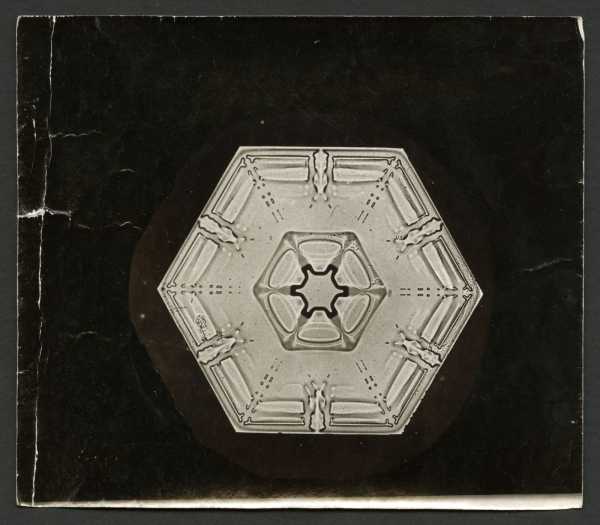
Lamellar Snowflake No. 200.
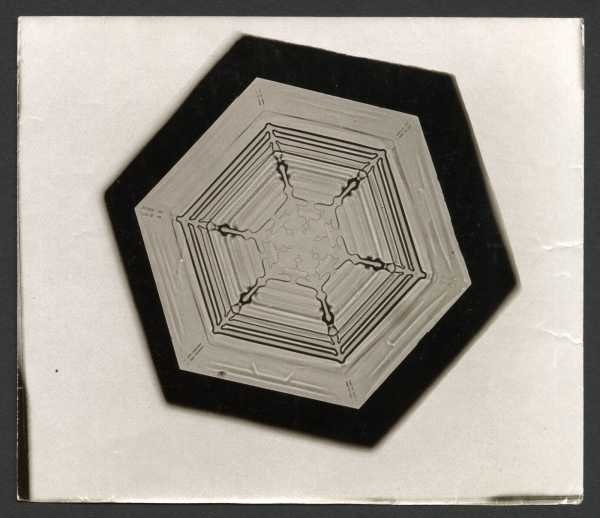
Lamellar Snowflake No. 234.
Bentley’s local paper noted in an obituary that “he saw something in the snowflakes which other men failed to see, not because they could not see, but because they had not the patience and the understanding to look.” But his influence did not end when his life did. In 1936, the Japanese physicist Ukichiro Nakaya created the first artificial snowflake, grown in his lab on the tip of a single rabbit hair. Inspired by Bentley’s work, Nakaya published, in 1954, “Snow Crystals: Natural and Artificial,” a collection of his own photographs of his lab-grown crystals, which catalogued eleven distinct shapes and delineated the variances in temperature and humidity that produced them. More recently, the physicist Kenneth Libbrecht has been refining the art of the lab-grown snowflake, and has managed to expand Nakaya’s typology to thirty-five categories, including exotic varieties such as the “bullet rosette” and the “capped column.” Libbrecht’s snowflake photographs, also inspired by Bentley, were compiled in his book “Field Guide to Snowflakes,” and have been featured on stamps issued by the United States Postal Service. In the book, Libbrecht writes that you don’t have to be a scientist or a photographer to enjoy studying snowflakes. At the very least, “pulling out your magnifier is definitely a conversation starter.”
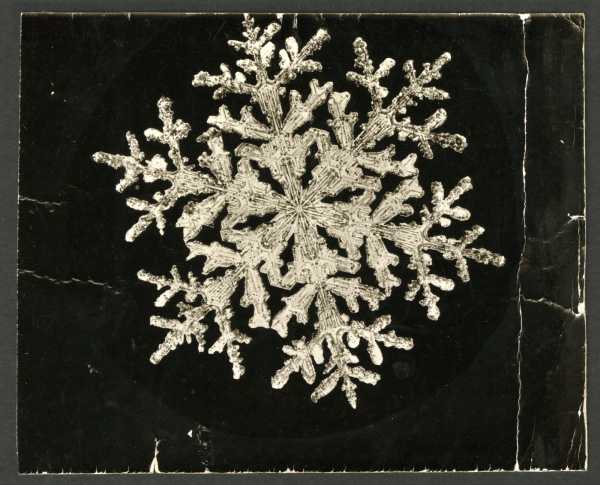
Fernlike Stellar Snowflake No. 1095.
Sourse: newyorker.com